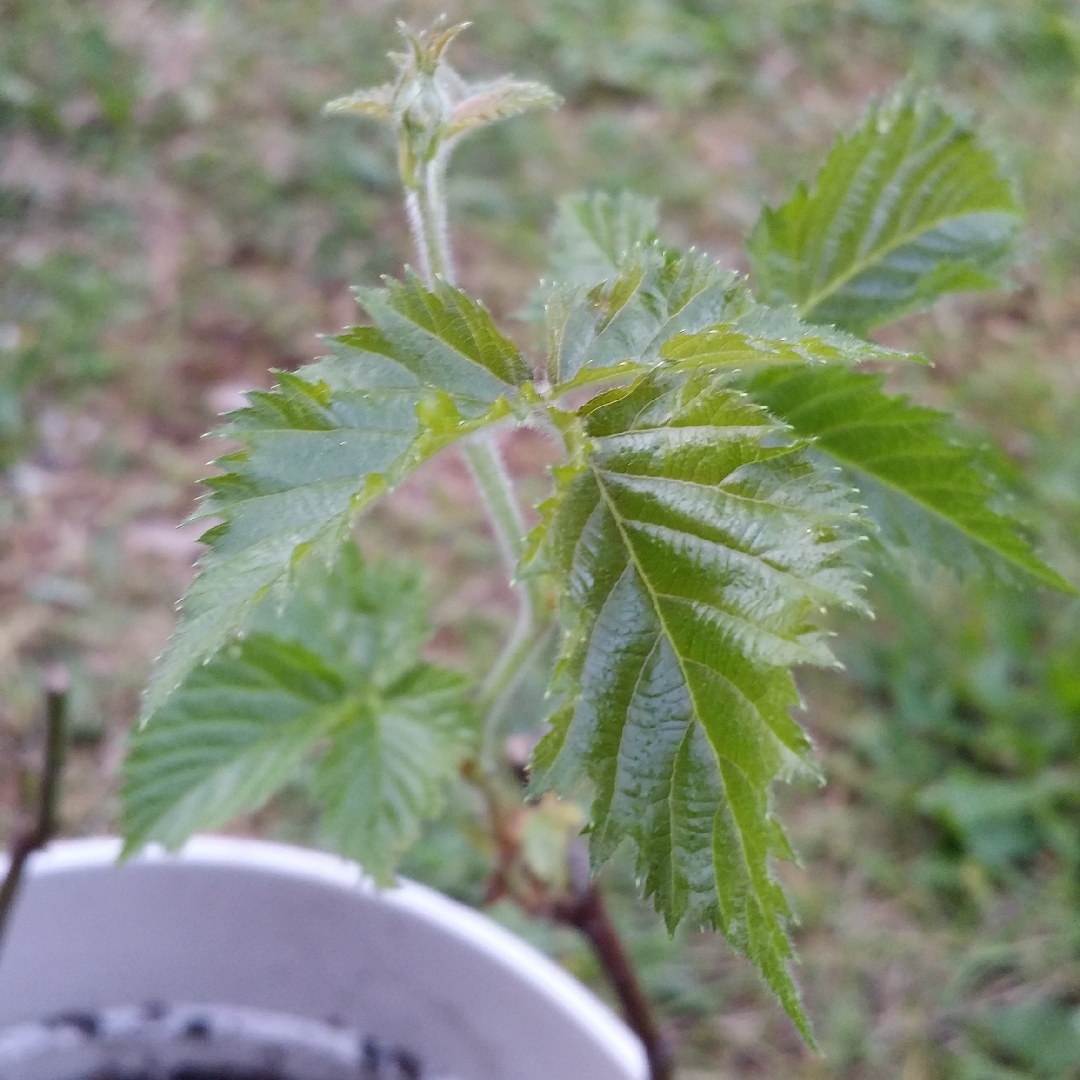
Rubus Fruticosus 'Prime Ark Traveler'
Blackberry 'Prime Ark Traveler'
Blackberry is a fruiting plant that grows wild in many parts of Europe, and cultivated varieties are also common. The black fruit are borne on a bramble, usually thorny, and are similar to raspberries in form, and with a sweet flavour. The fruit of the wild blackberry is ripe in late Summer to early Autumn. Blackberry blossom is white or pink. 'Prime Ark Traveler' is a thornless, upright blackberry bearing large firm fruit with good flavour.'Tipping' is recommended - cutting off 1" from the tip of the cane when it reaches 15" high, and again when it reaches 30".to force the cane to branch, and to keep the size of the cane in check.
Contributed by @dvod88
-
Full sun
-
Very little water
-
Full Frost Hardy: 5F (-15°C)
-
Free draining
Common name
Blackberry 'Prime Ark Traveler'
Latin name
Rubus Fruticosus 'Prime Ark Traveler'
type
Fruiting Plant
family
Rosaceae
ph
6.0 - 7.0 Acid - Neutral
Plant & bloom calendar
-
Best time to plant
-
When the plant will bloom
full grown dimensions
 0.60 M
2.50 M
0.60 M
2.50 M
Rubus Fruticosus 'Prime Ark Traveler'
Blackberry is a fruiting plant that grows wild in many parts of Europe, and cultivated varieties are also common. The black fruit are borne on a bramble, usually thorny, and are similar to raspberries in form, and with a sweet flavour. The fruit of the wild blackberry is ripe in late Summer to early Autumn. Blackberry blossom is white or pink. 'Prime Ark Traveler' is a thornless, upright blackberry bearing large firm fruit with good flavour.'Tipping' is recommended - cutting off 1" from the tip of the cane when it reaches 15" high, and again when it reaches 30".to force the cane to branch, and to keep the size of the cane in check.
Flowering Season
From Late Spring TO Mid Summer
Pink/white blossom before the fruit.
Planting Outdoors
From Early Winter TO Early Spring
Plant pot grown blackberries in the soil after digging in plenty of well rotted manure or compost into the soil first.
Propagation by Hardwood Cuttings
From Early Winter TO Late Winter
Take hardwood cuttings of up to .3m from this years growth, making a clean from above a shoot and remove any soft growth. Nearly fill a container with fine grit at the bottom, to enable free draining, and a suitable compost. Place the cutting, having dipped he end in a rooting compound first, with a third of the cutting showing.
Harvesting
From Mid Summer TO Early Autumn
Pick when the fruits are ripe. Lovely in pies and other puddings or for making jam with.
Harvesting
From Mid Summer TO Early Autumn
Pick when the fruits are ripe. Lovely in pies and other puddings or for making jam with.
Planting Outdoors
From Early Winter TO Early Spring
Plant pot grown blackberries in the soil after digging in plenty of well rotted manure or compost into the soil first.
Flowering Season
From Late Spring TO Mid Summer
Pink/white blossom before the fruit.
Propagation by Hardwood Cuttings
From Early Winter TO Late Winter
Take hardwood cuttings of up to .3m from this years growth, making a clean from above a shoot and remove any soft growth. Nearly fill a container with fine grit at the bottom, to enable free draining, and a suitable compost. Place the cutting, having dipped he end in a rooting compound first, with a third of the cutting showing.








